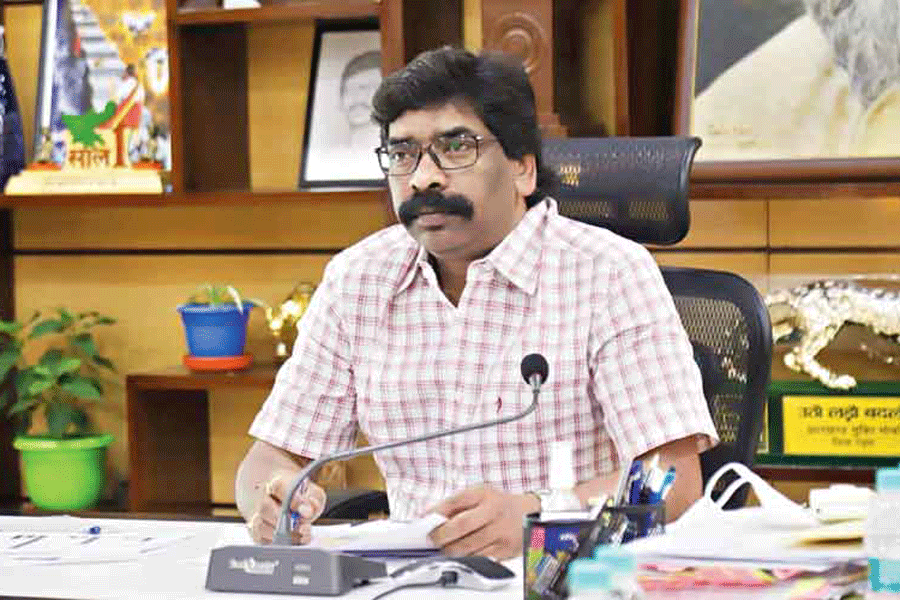Jharkhand, which has 30 per cent of its geographical area under forest cover, launched a campaign on Monday for the implementation of the Forest Rights Act 2006 after 17 years of its enactment.
Jharkhand chief secretary Sukhdev Singh said the state had managed to give forest leases to only 60,000 beneficiaries even after 17 years of the enactment of the act.
Chief minister Hemant Soren, who launched the Abua Bir Dishom (our forest country) campaign in Ranchi, expressed surprise at the sluggishness in the implementation of the act in a tribal state and gave a clarion call to the officers to ensure the campaign reached saturation point at the earliest.
The event was attended by forest officials and heads of all the 24 districts.
“It is unfortunate that other states have performed so well in terms of the execution of the Forest Rights Act for forest dwellers while our state is lagging behind. It shows our bureaucrats are not keen on executing this act in a state whose mineral wealth is being looted by corporate sectors while tribes dependent on forests are facing the threat of survival. The monitoring of this campaign will be held very seriously and I would like the campaign to reach saturation point at the earliest,” said Soren. “The mafia is looting forest woods while poor tribals who have been given rights under the act are deprived by the forest officials who treat them as encroachers.”
Soren admitted that 80 per cent of the state’s populace is dependent on agriculture and forests and asked the bureaucrats to change their working style and become a role model for the masses.
Jharkhand had in October launched a month-long campaign to constitute forest rights committees (FRCs) in each of the over 30,000 villages, and tribal welfare department and forest department officials said over 80 per cent of the target had been achieved and would benefit over 15 lakh forest dwellers.
The constitution of the FRCs at district, sub-division, block and village levels is crucial to give individual forest rights (IFR) and community forest rights (CFR) to villagers dependent on forest resources.
The Scheduled Tribes and Other Traditional Forest Dwellers (Recognition of Forest Rights) Act, 2006 (commonly referred to as the Forest Rights Act) provides for recognition of the right to “protect, regenerate or conserve or manage” the community forest resource. These rights allow the community to formulate rules for forest use and thereby discharge its responsibilities under Section 5 of the Forest Rights Act.
According to a study based on the geographic information system by Ashoka Trust for Research in Ecology and the Environment, the percentage of both IFR and CFR rights recognition in the state stands at 56 per cent as of December 2020.











